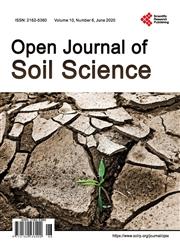Food Security: Impact of European Settlement and Infrastructure on Columbia River Salmon Migration
引用次数: 2
Abstract
The 2000 km Columbia River is the longest river in the Pacific Northwest region of North America. It starts in British Columbia, Canada and flows through the states of Oregon and Washington before discharging into Pacific Ocean near Cape Disappointment. The mouth of the Columbia River is a deep water harbor and 180 km of the river can be accessed by navigation. Based on flow volume, the river is the 4th largest river in the United States. The headwaters and approximately 800 km of the Columbia River lie in Canada. Columbia Lake and the Columbia Wetlands are located in British Columbia and are the headwaters of the Columbia River. The lake has an elevation of 820 m above sea level and drains to the Pacific Ocean near Astoria, Oregon. The Ocean tides flow up river to Portland, Oregon. This paper highlights how the geological and landscape resources of the Columbia River and tributaries watershed contributed to the economic development of this historically rich region of North America. The Columbia River is one of the most biologically diverse freshwater systems in the United States. The Columbia River system with trails and cruise ships was designed to increase use of the Columbia River, to promote recreational tourism, and to create a generation of people who are willing to protect and provide environmental stewardship of the river basin resources.粮食安全:欧洲定居和基础设施对哥伦比亚河鲑鱼迁徙的影响
长达2000公里的哥伦比亚河是北美太平洋西北地区最长的河流。它始于加拿大的不列颠哥伦比亚省,流经俄勒冈州和华盛顿州,然后在失望角附近流入太平洋。哥伦比亚河的入海口是一个深水港,180公里的河流可以通过航行到达。根据流量,这条河是美国第四大河流。哥伦比亚河的源头和大约800公里的河段位于加拿大。哥伦比亚湖和哥伦比亚湿地位于不列颠哥伦比亚省,是哥伦比亚河的源头。该湖海拔820米,流入俄勒冈州阿斯托里亚附近的太平洋。海潮逆流而上流向俄勒冈州的波特兰市。本文重点介绍了哥伦比亚河及其支流流域的地质和景观资源如何促进这一历史上丰富的北美地区的经济发展。哥伦比亚河是美国生物多样性最丰富的淡水系统之一。拥有步道和游船的哥伦比亚河系统旨在增加哥伦比亚河的利用,促进休闲旅游,并培养愿意保护和提供流域资源环境管理的一代人。
本文章由计算机程序翻译,如有差异,请以英文原文为准。
求助全文
约1分钟内获得全文
求助全文

 求助内容:
求助内容: 应助结果提醒方式:
应助结果提醒方式:


